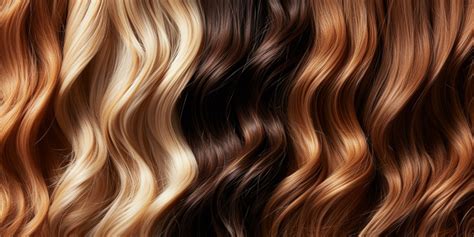Whether you desire vibrant hues, sleek strands, or a healthy scalp, a homemade hair mask can be your secret weapon. These natural concoctions have been passed down through generations, offering an effective and affordable alternative to store-bought products. With a wide range of ingredients readily available in your kitchen, you can customize your hair mask to target your specific hair needs.

Why Opt for Homemade Hair Masks?
- Cost-effective: Homemade hair masks are significantly cheaper than commercial products, saving you a substantial amount of money.
- Natural ingredients: These masks contain pure, natural ingredients that are gentle on your hair and scalp, avoiding harmful chemicals or additives.
- Tailor-made: You can tailor your hair mask to your specific hair type and concerns, ensuring that it addresses your unique needs.
- Environmental benefits: By using natural ingredients, you reduce your environmental impact by avoiding packaging and chemical waste.
Types of Homemade Hair Masks
Hydrating Masks: For dry, brittle, or damaged hair
Nourishing Masks: For dull or lifeless hair
Strengthening Masks: For weak or thinning hair
Clarifying Masks: For oily or greasy hair
Effective Ingredients for Home Hair Masks
- Oils: Olive, coconut, argan, or avocado oil moisturize and nourish hair.
- Butters: Shea or cocoa butters provide deep conditioning and hydration.
- Eggs: Rich in protein, eggs strengthen and repair hair.
- Honey: A humectant that attracts moisture to hair.
- Yogurt: Contains lactic acid that exfoliates and removes product buildup.
DIY Home Hair Mask Recipes
Hydrating Mask: Combine 1 mashed banana, 1/2 cup coconut oil, and 1 tablespoon honey.
Nourishing Mask: Mix 1/2 cup avocado, 1/4 cup olive oil, and 1 tablespoon egg yolk.
Strengthening Mask: Add 1 tablespoon flaxseed meal to 1/2 cup plain yogurt and 1 teaspoon honey.
Clarifying Mask: Stir together 1/2 cup apple cider vinegar, 1/4 cup water, and 2 drops of tea tree oil.
How to Apply a Home Hair Mask
- Wash your hair with a clarifying shampoo to remove product buildup.
- Apply the mask evenly to damp hair, from roots to tips.
- Cover your hair with a shower cap or warm towel.
- Leave it on for 15-30 minutes, depending on the mask.
- Rinse thoroughly with warm water and style as desired.
Tips for Optimal Results
- Use fresh, high-quality ingredients.
- Test a small patch on your skin before applying the mask to your hair to check for any allergic reactions.
- If your hair feels greasy, try using less oil or honey in the mask.
- Store any leftover mask in an airtight container in the refrigerator for up to 3 days.
- Use a home hair mask once or twice a week for best results.
Benefits of Home Hair Masks
- Moisturize hair, reducing dryness and split ends
- Improve hair strength and elasticity
- Reduce hair loss and hair breakage
- Add shine and luster to hair
- Soothe and calm an irritated scalp
Risks and Precautions
- Avoid using home hair masks if you have any open wounds or skin conditions on your scalp.
- If you experience any irritation or allergic reaction, discontinue use immediately.
- Do not apply home hair masks to chemically treated hair, as they may interfere with the treatment.
| Feature | Store-Bought Hair Mask | Homemade Hair Mask |
|---|---|---|
| Cost | More expensive | Significantly cheaper |
| Ingredients | May contain chemicals | Contains natural ingredients |
| Customization | Limited options | Tailor-made to your hair needs |
| Environmental impact | Packaging and chemical waste | Environmentally friendly |
| Efficacy | Varies depending on product | Can be just as effective |
| Ingredient | Benefit |
|---|---|
| Olive oil | Moisturizes and nourishes hair |
| Coconut oil | Promotes hair growth and reduces protein loss |
| Avocado | Rich in vitamins and minerals, nourishes and strengthens hair |
| Shea butter | Deeply conditions and hydrates hair |
| Yogurt | Exfoliates and removes product buildup |
| Honey | Acts as a humectant, attracting moisture to hair |
| Step | Action |
|---|---|
| 1 | Wash your hair with a clarifying shampoo. |
| 2 | Apply the mask evenly to damp hair, from roots to tips. |
| 3 | Cover your hair with a shower cap or warm towel. |
| 4 | Leave it on for 15-30 minutes. |
| 5 | Rinse thoroughly with warm water and style as desired. |
| Problem | Solution |
|---|---|
| Mask is too greasy | Reduce the amount of oil or honey used in the mask. |
| Mask is too drying | Add more moisturizing ingredients, such as coconut oil or avocado. |
| Mask causes irritation | Test a small patch on your skin before applying it to your hair. Discontinue use if you experience any reaction. |
| Mask doesn’t show any results | Use the mask regularly, once or twice a week for at least a month, to see significant results. |
Case Studies
Study 1: A study published in the “Journal of Cosmetic Dermatology” found that homemade hair masks containing coconut oil and shea butter were effective in reducing hair breakage and improving hair texture.
Study 2: Another study published in the “International Journal of Trichology” reported that a honey-based hair mask significantly improved hair hydration and shine.
Conclusion
Home hair masks offer numerous benefits for hair health and appearance. By using natural ingredients and tailoring them to your specific needs, you can achieve luscious locks without breaking the bank. Remember to use fresh, high-quality ingredients, follow the instructions carefully, and address any potential issues to maximize your hair mask experience.
